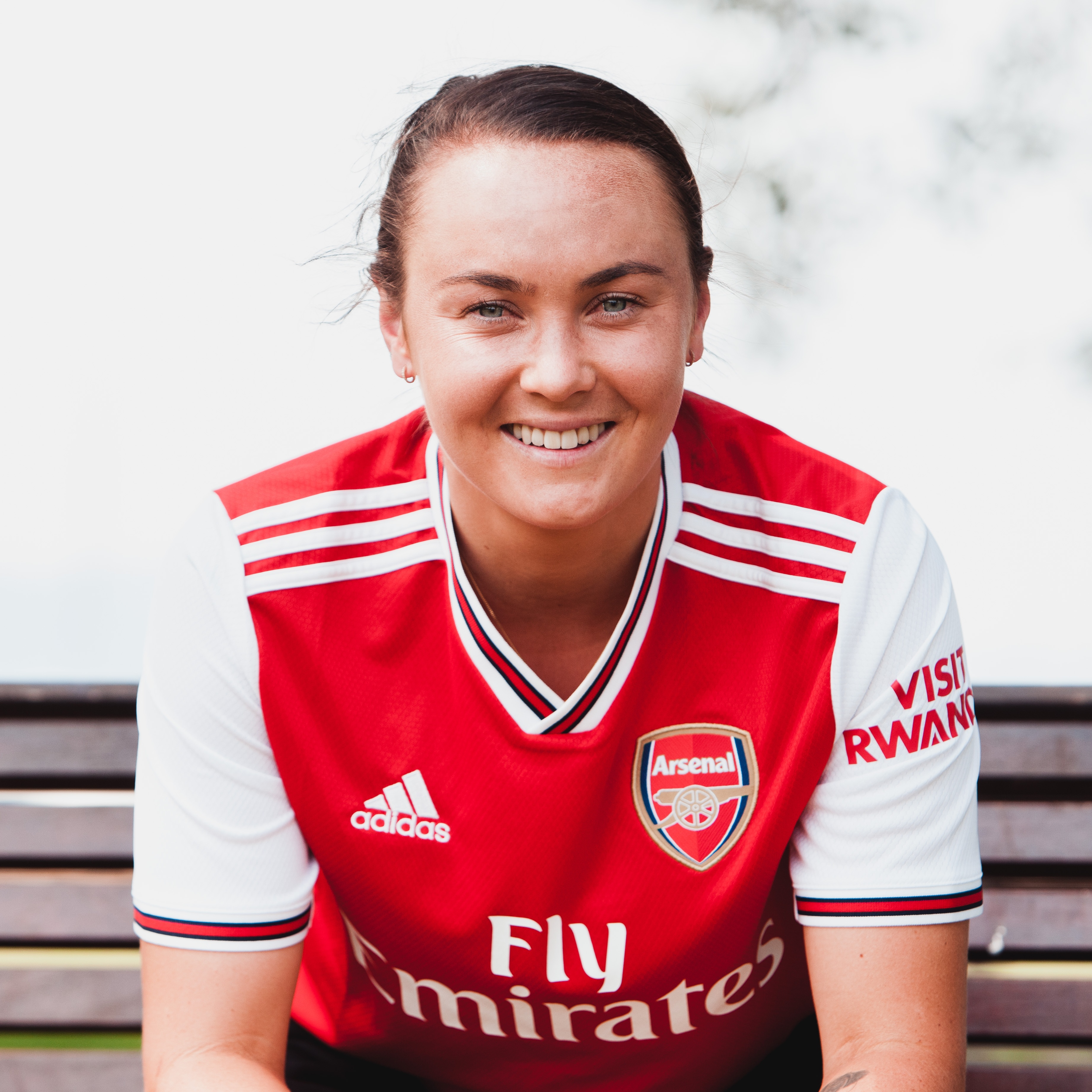
A trio of Matildas stars are now Gunners. Caitlin Foord, Steph Catley and Lydia Williams will all be gearing up under Aussie Coach Joe Montemurro. Here’s why this is fate.
Modern Australian football has been intricately intertwined with the Dutch philosophy since that fateful moment in 2005 when the Socceroos qualified for the Men’s World Cup for the first time in 32 years. From that moment Guus Hiddink left a defining mark that would dictate how this current generation would play their football. How this would develop wouldn’t just define men’s football, but be fundamental to the identity and success of the Matildas’ success.
Introducing the 433 and the Use of Space.
Ask anyone who has watched the Matildas play over the last 5 years what formation will be played, without a shadow of a doubt they will say 433. Think about how the Matildas use space on the pitch, very narrow and tight in defence, to open and expand in possession. The so-called ‘Dutch’ way. ‘Total Football’ it’s often dubbed.
This ‘style’ has turned into a strict formula, where players know each role and it’s responsibilities with incessant experience. The use of the flanks is welcomed, with crosses encouraged. However, playing out from the back and maintaining possession of the ball horizontally across the park is treasured. Perhaps more so than daring creativity to flood numbers centrally and attack the goals directly.
Ironically, it was the Netherlands who dismantled the Matildas 3-nil in a warm up ahead of the 2019 Women’s World Cup. The high press, high line and flirting with danger on the ball was all exposed with ease by the Oranje. The Matildas inability to break the lines of defence or move away from predictable build up in attack was on full display.
Three current Arsenal players were part of the team that taught the Matildas a lesson that day. There is a distinctly Dutch flavour at the Gunners, each for a significant part of the fabric in the club, with Vivianne Miedema’s attacking prowess part of the club’s identity, while the midfield duo of Danielle van de Donk and Jill Roord bring grit and creativity. Adding more Aussies into this mix is simply a stroke of genius.
The Players

To break it down beginning with Caitlin Foord, flexibility in Arsenal’s front line is perhaps the most important, and successful, element of their attack. Sure they have a goal machine in Miedema, but the number nine thrives when allowed the freedom to roam. This relies on the smart movement and adaptability of other players. Foord, who can play comfortably anywhere across the front line, fills that role perfectly. Add in her class on the ball and love for fluid possession, and Foord has the opportunity to hone the creative spark the Matildas have at times lacked in the final third by mixing it with the best in England.

Defensively, Steph Catley, Arsenal and playing the ‘Arsenal’ way is a no brainer. Strong off the ball, and flexibility to play in different formations across the back, with knowledge and discipline. In possession is where she will thrive. Arsenal, a team reliant on dominating possession, has a fullback who knows how to pass the ball out of defence under pressure. Add in the width Catley provides in attack, either sitting in a free pocket of space or stretching defences when marked, while being capable of delicious left footed crosses.

Lydia Williams is perhaps in a different position than her compatriots. With young Austrian Manuela Zinsberger still on the books, it’ll be a battle for who is in the first starting eleven. Arsenal are likely out of Europe, unless they earn the Crown this August. So while matches will come thick and fast, it won’t have the pressure of also playing on the Continent. This doesn’t mean Williams doesn’t fit into Arsenal like a fish in water. Indeed, it’s her knowledge of playing out from the back and as a sweeper keeper, protecting her goal from teams working the counter attack, that makes her a quality signing. Finding form early in pre-season will mean she can demand that starting jersey.
The Matildas
The appointment of Ante Milicic only served to reinforce the ‘Total Football’ style of play. He is well experienced in the Australian system. Some variations away from tradition have been tried, such ideas produced a wild 5-3 match against the USA last year. However, overwhelmingly, the default remains as a 433, playing out from the back, making the pitch look big in attack and small in defence. Predictable.
Three core Matildas players now have the opportunity to further refine the style they know so well. This will hopefully be an instance like discovering your favourite chocolate has a different, but just as delicious, flavour. Arsenal play in a way so familiar, yet so foreign. The system is the same, the ideas often are, however the execution, creativity and week in – week out pressure will sharpen any edges found on our exports.
Catch up on our Aussies Abroad coverage.
Article originally published on Molly’s Football Rants and is republished with permission.






